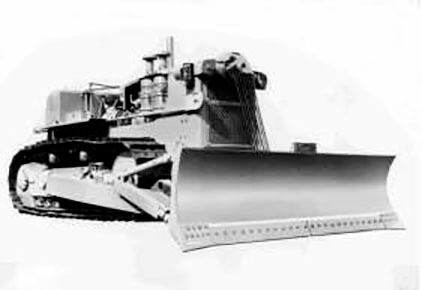1960
Liberalization of trade brought Japan demand from abroad and the opportunity to raise Japan's technological advancements to a world-class level. The introduction of large-scale power sources took place, which accelerated development of larger equipment.

As larger scale construction projects increased, the need for larger bulldozers also rose at many sites including dam building, road building, quarries, power stations, etc.
D250 was developed to compete with Caterpillar's D9, which was popular in Japan back then. Its trial product was submitted and displayed at a trade fair in Moscow as Japan's largest bulldozer in 1960. It became a foothold product to extend the series to D355A and D455A.
Weight: 31700kg
Bulldozer
Since its first emergence in 1951, it took only 50 years for the hydraulic shovel to establish its primary position on construction sites worldwide. Its size ranges from mini to super size depending on the scale of construction, and during the half century, it kept evolving by achieving a minimum rear-swing radius and adapting styles that would work with characteristics of each site. Mirroring the movement of a human hand, a hydraulic shovel will continue to evolve during the 21st century.